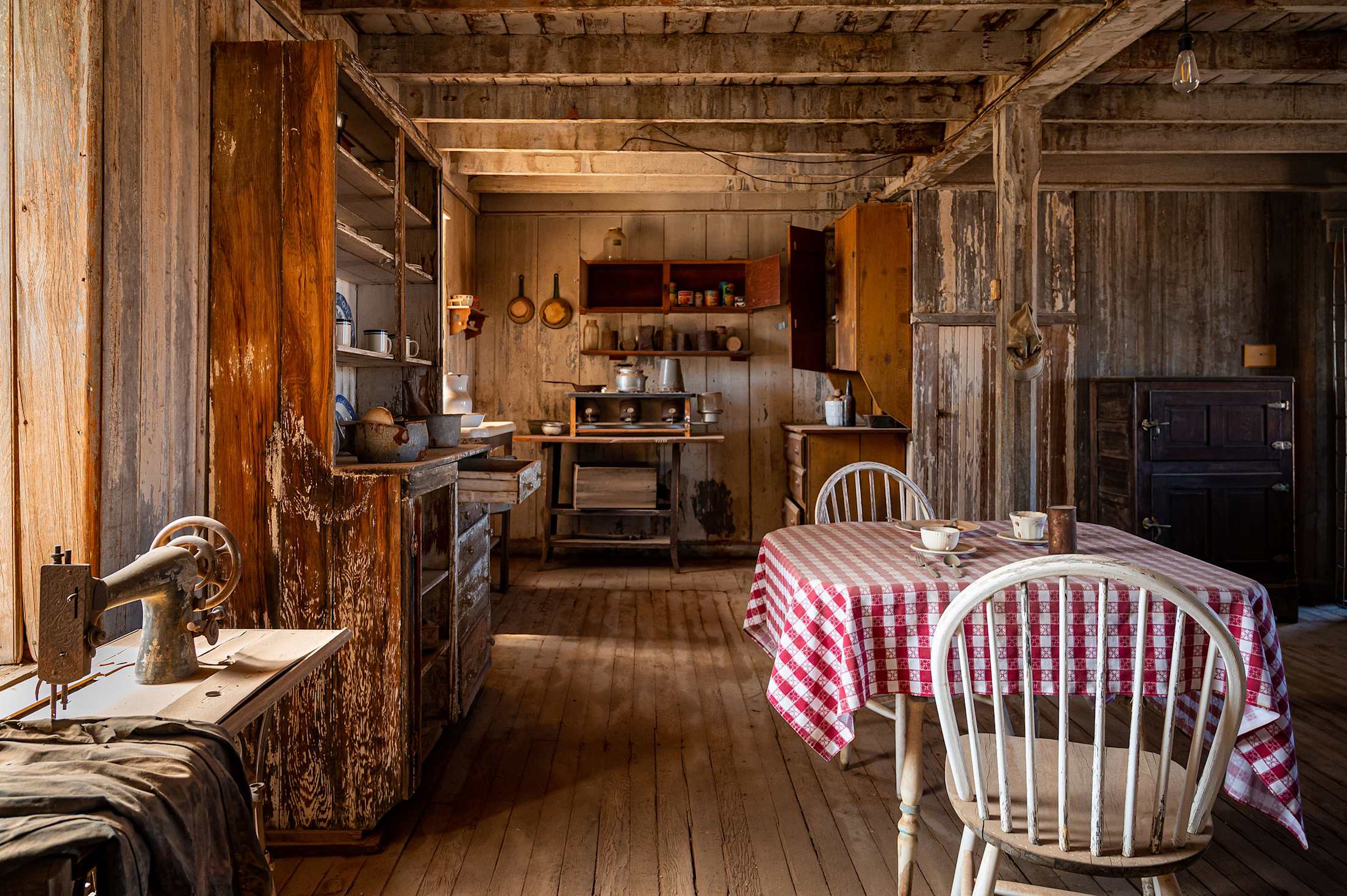
Arizona’s 5 Best Ghost Towns
Explore these abandoned towns around the state.

From an eerily abandoned copper mining outpost to a deserted camp where visitors can stay the night, these time-capsule towns offer a fascinating view of Arizona’s bygone days.
Oatman
Sometimes called a “living ghost town,” this Route 66 town in Northwestern Arizona is home to around 100 people. But that’s a nugget of its population in the 1920s and 1930s, when 10,000 people wandered the dusty streets. Thanks to repeated gold strikes between the 1860s and 1910s, this boomtown received influxes of prospectors and businesspeople. But like many mining towns, Oatman suffered the vagaries of ore prices, and during WWII, the mines were deemed non-essential to the war effort and closed. For a while, the Mother Road helped Oatman thrive as a tourism hotspot. But in the 1950s, when Interstate 40 bypassed Oatman, the town was left in the dust.
Still, Oatman is worth a visit for its fascinating cast of characters. Clark Gable and Carole Lombard honeymooned here at the Durlin Hotel, now called the Oatman Hotel, and travelers can visit the bar, restaurant, onsite museum, and honeymoon suite. Every day, crowds gather in the street to watch the Oatman Ghost Rider Gunfighters act out a heist and shootout. And the most popular locals are the wild burros, who are descended from donkeys brought to town by miners and now wander the streets like they own the place.

Vulture City
Vulture City is filled with photogenic rusty trucks, weathered wooden buildings, and rumored paranormal activity, set against a backdrop of saguaros. This settlement near Wickenburg was established during the Civil War to support Vulture Mine, Arizona’s most productive gold mine. The population quickly swelled to 5,000. But when World War II broke out, the mine was shuttered to ensure resources were directed toward military efforts. The town was soon abandoned.
Today, some of the stone edifices and artifacts have been faithfully restored. Visitors can safely poke around the assay office, cookhouse, brothel, post office, and prospector Henry Wickenburg’s original home on a self-guided tour or a seasonal (mid October through mid May), weekend guided tour. General admission for all visitors is $15 per adult.
Swansea
Rocky, rough, and punctuated with piles of mine tailings, the road into Swansea feels as forgotten as this now-deceased town. In the 1860s, copper mining started in this barren part of Western Arizona’s Buckskin Mountains. The subsequent settlement was named after Swansea, Wales, which was both the hometown of founder George Mitchell and the destination where Arizona’s refined ore was shipped.
In the early 1900s, a railroad brought buzzing activity to this remote outpost. The 750-or-so residents frequented Swansea’s saloons, barbershop, auto dealership, and moving picture house. But the mining companies began to sputter, and the Great Depression sounded the death knell for Swansea. Today, the town is preserved by the Bureau of Land Management. Visitors can stand atop grate-covered mine shafts, see an earthquake-damaged smelter, and roam around the workers’ cottages—shells of buildings where, shockingly, up to six miners shared the tiny space.

Tortilla Flat
Just down the road from stunning Canyon Lake, where standup paddleboarders and Dolly Steamboat riders cruise between golden cliffs, lies Tortilla Flat, population: six. Established in 1904 as a freight camp for laborers constructing Roosevelt Dam, the town has served as a stagecoach station and lunchtime pit stop for President Theodore Roosevelt. Located an hour from downtown Phoenix, this leisurely outpost is popular with day trippers looking for a Western vibe and watery adventure.
At the Superstition Saloon & Restaurant, diners can hop onto saddle bar stools and sip sarsaparilla while feasting their eyes on the estimated $350,000 worth of signed dollar bills papering the walls. For dessert, pop into the Tortilla Flat General Store for a prickly pear gelato and mosey down the boardwalk. Then head to the mini museum to learn about the town’s colorful history, from fires to filmmaking.
Kentucky Camp
Nestled in the “sky island” mountains north of Sonoita, Kentucky Camp offers a rare chance to spend the night in an abandoned ghost town. The U.S. Forest Service rents a restored adobe cabin onsite, giving guests an intimate experience with deserted buildings set amidst the silence of the grasslands and the grandeur of a star-filled sky.
After gold was discovered in the area in 1874, around 500 miners rushed in, depleting the deposits within a decade. In 1904, Kentucky Camp was built as the headquarters of the Santa Rita Water and Mining Company, which aimed to employ hydraulic gold mining to extract more ore. But the venture fizzled out when, a year later, the camp’s designer and chief engineer mysteriously plummeted to his death from a window in Tucson. Today, visitors can explore the restored headquarters building, relax on the porch, and mountain bike or hike along the Arizona Trail.